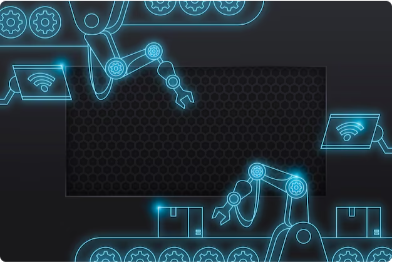Since time immemorial, the American tech industry has been a major contributor to world innovation and has served as a strong impetus for economic development. Nevertheless, despite such progressivism, the industry grapples with a major challenge: the challenge of gender gap.Women are still found in lead and technical roles very seldom. Systemic barriers and culture affect that gap greatly. Equity-only fills gender spaces, not potential unlocking. Current state of women in tech, challenges they face, and measures-policies that can be put in place to foster inclusion in the tech sector within the USA are investigated here.
The Current Landscape
- According to data obtained from the National Center for Women and Information Technology (NCWIT), women make nearly half of the U.S. total workforce but only constitute about 28 percent of the workforce in the tech industry. The numbers become smaller and smaller when narrowing it down to technical roles and leadership positions. For instance:
- Only 25 percent of all computing-related jobs are held by women.
- Women of color face an even graver underrepresentation; Black, Latina, and Native American women together account for less than 10 percent of the total tech workforce.
The Importance of Gender Diversity in Tech Industry

- Gender diversity is a business necessity, not just a moral educational imperative. Research shows that diverse groups perform better, creating more innovation and profitability. For the tech industry, which thrived on creativity and problem-solving, adding more women would be beneficial in product development by
- Developing Products Better- Different perspectives enable products and services to be designed and oriented toward the needs of a bigger audience.
- Improvement of Decision Making: When an organization has culturally diverse leadership, it can better address and solve complicated challenges.
Challenges Women Face in Technology
Bias and Stereotypes
- Stereotypes deny girls the opportunity of participating in STEM (Science, Technology, Engineering, and Mathematics) fields.
- Women who have already entered the field of technology encounter many biases that are experienced as detractors in their contributions and limitations in advancement.
Lack of Role Models
The shortage of female tech leaders creates a visibility void. Young women may find it very hard to imagine themselves having a tech career when they do not see other women achieving in the field.
Workplace Culture
- For most of such companies in the tech space, they have been accused of having such a form of culture wherein they develop or nurture the so-called primarily “bro cultures” rendering exclusion or alienation of women.
- The enumerated issues, such as gender-based harassments, lack of mentorship, and unequal pay, worsen the problem further.
Problems of Retention
- Females in technological fields are much more likely to leave than their male counterparts.
- Reasons include limited opportunities for advancement, difficulties in balancing work and private life, and hostile working environments.
Bridging Initiatives for the Gender Gap
The progressive steps taken in bridging the distance have indeed increased momentum to bridge the gender gap in technology. Organizations, companies, and policymakers are putting up strategies to make the industry diverse. Some of the initiatives are:
Promote STEM Education for Girls
- To inspire more girls to develop interest in technology careers, early exposure to STEM needs to be done. For example, there are programs like Girls Who Code, Black Girls CODE, or STEM summer camps that mentor young girls and provide resources to support them.
- Reduce Bias in Recruitment and Promotion
- Creating processes for Blind Hiring: Hiding identifying information in manuscripts in order to minimize unborn bias. -Compensation auditing: salaries, promotion rates, and more.
Flexible working arrangements. Comprehensive parental leave policies. - Zero-tolerance discrimination and harassment carriage policies.
Create Mentorship and Sponsorship
Mentorship is a system that will link young women with seasoned professionals who will help them along their careers. Sponsorship—where leaders advocate for their mentees—further pushes rapid career advancement.
Acknowledging the Pursuits of Women
- Pawning talent achievements will motivate and demystify women who have held the torch aloft for others-such as marking events in Women’s History Month or organizing awards and media campaigns venerating role models in women.
Joint Roles of the Corporates and the Policymakers
It cannot just be done by making one martian travel under the seal, one has to work for collective actions by organizations and policymakers in shaping the conducive environment for women in tech.
- For Companies:
- Set common goals on diversity and progress metrics.
- Leadership training programs are given to ladies.
- Creating a diverse culture through diversity training and employee resource groups (ERGs).
- For Policymakers:
- They encourage and invest in STEM education for communities; offering an accountability act on equal pay; supporting initiatives that will provide child care and parental leave benefits.
Leading the Charge
- Some companies and organizations are currently holding the leading torch for gender diversity in technology.. Examples include:
- Salesforce: Ensured payment equity through regular salary audits.
- Intel: Pledged to have full female and minority representation in the workforce.
- AnitaB.org: Hosts the Grace Hopper Celebration, largest gathering of women in computing in the world, every year.
Future for Women in Tech
- Progress has indeed been made but there remains a lot of work ahead, before closing out the gender gap in the tech industry in the USA.
- All individuals, companies, and the governments are expected to keep working together long term to eliminate systemic barriers and create a better work environment.
- For Individuals: Advocate for you and others, find a mentor, and participate in networking opportunities.
- For Corporates: View diversity as a business imperative and integrate it across core strategies.
- For Society: Challenging stereotypes and celebrating diverse contributions to the tech could do a favor.
Conclusion
Bridging the gender gap in the tech industry in the USA is not just fairness; it is unleashing the full potential of the industry itself. Addressing biases, creating supportive environments, promoting role models, and paving the way for a more inclusive and innovative future are critical. Though this journey may be long, with collective action we can ensure that there will be equal opportunities for women to shape the technologies that regulate our lives.




